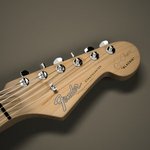Attraverso il nostro store puoi supportare il forum e nel contempo, ottieni un simpatico gadget da poter utilizzare!

CLICCA QUI
utilizza il codice jb20
e ottieni subito uno
sconto del 20%
su tutti gli articoli!

CLICCA QUI
utilizza il codice jb20
e ottieni subito uno
sconto del 20%
su tutti gli articoli!
-
 Blues su un solo accordo
di Donatello Nahi
Blues su un solo accordo
di Donatello Nahi
[Oggi alle 12:29 AM] -
 Marcus King
di Donatello Nahi
Marcus King
di Donatello Nahi
[02 Gennaio, 2026, 07:37 PM] -
 Parafang!!
di Santano
Parafang!!
di Santano
[02 Gennaio, 2026, 07:10 PM] -
 E poi arriva Fanton....
di Vu-meter
E poi arriva Fanton....
di Vu-meter
[02 Gennaio, 2026, 05:42 PM] -
 Cosa ascoltano ultimamente i Jamblers?
di LawHunter
Cosa ascoltano ultimamente i Jamblers?
di LawHunter
[02 Gennaio, 2026, 12:51 AM] -
 Problema Schermatura alloggio Pick Up?
di Shinechoes
Problema Schermatura alloggio Pick Up?
di Shinechoes
[01 Gennaio, 2026, 08:36 PM] -
 La taverna dei Jamblers
di robland
La taverna dei Jamblers
di robland
[31 Dicembre, 2025, 07:20 PM] -
 Regalo di Natale
di robland
Regalo di Natale
di robland
[31 Dicembre, 2025, 07:18 PM] -
 Un pitch shifter al caso mio?
di Jessie_Greg_Music
Un pitch shifter al caso mio?
di Jessie_Greg_Music
[31 Dicembre, 2025, 02:03 PM] -
 Chuck Berry, Mr rock'n'roll, da fruttivendolo a leggenda...
di Donatello Nahi
Chuck Berry, Mr rock'n'roll, da fruttivendolo a leggenda...
di Donatello Nahi
[30 Dicembre, 2025, 08:09 PM] -
 Il mio primo pedale?
di LawHunter
Il mio primo pedale?
di LawHunter
[30 Dicembre, 2025, 07:08 PM] -
 Barrio la Viña
di Vu-meter
Barrio la Viña
di Vu-meter
[27 Dicembre, 2025, 08:40 AM] -
 Prosit's basic gear
di b3st1a
Prosit's basic gear
di b3st1a
[26 Dicembre, 2025, 12:29 AM] -
 Gibson flying v o Explorer
di LawHunter
Gibson flying v o Explorer
di LawHunter
[25 Dicembre, 2025, 06:30 PM] -
 Brunetti Singleman
di Vu-meter
Brunetti Singleman
di Vu-meter
[24 Dicembre, 2025, 04:05 PM] -
 Gli oggetti della nostra GAS
di Donatello Nahi
Gli oggetti della nostra GAS
di Donatello Nahi
[24 Dicembre, 2025, 03:57 PM] -
 Derek Trucks, the King of the slide
di Donatello Nahi
Derek Trucks, the King of the slide
di Donatello Nahi
[23 Dicembre, 2025, 09:42 AM] -
 Addio Chris Rea
di Vu-meter
Addio Chris Rea
di Vu-meter
[23 Dicembre, 2025, 09:15 AM] -
 Mostraci la tua pedaliera!!!
di Santano
Mostraci la tua pedaliera!!!
di Santano
[22 Dicembre, 2025, 10:03 AM] -
 Come insegnare a suonare ad un bambino?
di robland
Come insegnare a suonare ad un bambino?
di robland
[21 Dicembre, 2025, 05:34 PM] -
 Possibile attacco hacker
di Vu-meter
Possibile attacco hacker
di Vu-meter
[21 Dicembre, 2025, 05:11 PM] -
 Quale Chorus ? Consigli...
di Donatello Nahi
Quale Chorus ? Consigli...
di Donatello Nahi
[20 Dicembre, 2025, 03:03 PM] -
 Fender '62 Super Amp - la via di mezzo?
di Vu-meter
Fender '62 Super Amp - la via di mezzo?
di Vu-meter
[20 Dicembre, 2025, 11:15 AM] -
 Modulazioni
di elzeviro
Modulazioni
di elzeviro
[20 Dicembre, 2025, 11:02 AM] -
 Eric Steckel
di robland
Eric Steckel
di robland
[20 Dicembre, 2025, 08:49 AM] -
 Ad oltranza...Vasco
di robland
Ad oltranza...Vasco
di robland
[19 Dicembre, 2025, 06:59 PM] -
 dubbi su amplificatore...
di Vu-meter
dubbi su amplificatore...
di Vu-meter
[18 Dicembre, 2025, 08:48 AM] -
 prova traduzione audio YouTube
di Vu-meter
prova traduzione audio YouTube
di Vu-meter
[17 Dicembre, 2025, 06:42 PM] -
 One Control BJFE - Shades Of Green O.D. DLX
di Vu-meter
One Control BJFE - Shades Of Green O.D. DLX
di Vu-meter
[17 Dicembre, 2025, 07:47 AM] -
 Ampli valvolari: qualche mito sfatato
di Jessie_Greg_Music
Ampli valvolari: qualche mito sfatato
di Jessie_Greg_Music
[16 Dicembre, 2025, 09:32 PM]
Attacco di GAS unico e ininterrotto: truefire.com e i suoi videocorsi
Aperto da Stevie J, 28 Giugno, 2015, 02:44 PM
Discussione precedente - Discussione successiva
Azioni


